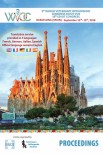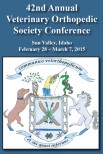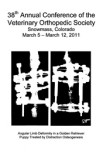OBJECTIVES: The aim of this study was to study the demographics of feline hip dysplasia (FHD) in the Maine Coon cat.
METHODS: The complete hip dysplasia registry (public and private) collected by the Orthopedic Foundation for Animals through April 2015 was accessed. There were 2732 unique cats; 2708 (99.1%) were Maine Coons, and only these were studied. Variables analyzed were sex, month/season of birth and hip dysplasia score. Two groups were created: those with and without FHD. P <0.05 was considered statistically significant.
RESULTS: The youngest cat with FHD was 4 months of age. The majority of the radiographs (2604/2708 [96.2%]) were performed between 4 and 60 months of age. Non-borderline scores for these 2604 cats were available in 2548, and were the data used for this study. The overall prevalence of FHD was 24.9% (635/2548), and was slightly higher in males (279/1023 [27.3%]) than females (356/1525 [23.3%]) ( P = 0.025). Those with more severe dysplasia were older. The percentage of bilateral FHD was 56%, and bilateral cases had more severe dysplasia than unilateral cases but with no age difference. Month/season of birth or geographic region of origin did not influence the prevalence of FHD.
CONCLUSIONS AND RELEVANCE: This is the largest demographic study of FHD in the Maine Coon cat. The overall prevalence in the Orthopedic Foundation for Animals registry was 24.9%, and slightly higher in males (27.3%) than females (23.3%). Dysplasia was more severe in bilateral than unilateral cases and with increasing age. Caution should be used when extrapolating these findings to other feline breeds or other groups of Maine Coon cats. Further studies need to be performed among other breeds and geographic locations to better understand the demographics of feline hip dysplasia.
Demographics of hip dysplasia in the Maine Coon cat
Journal
Loder RT, Todhunter RJ. J Feline Med Surg. 2017 Apr [Epub ahead of print]









